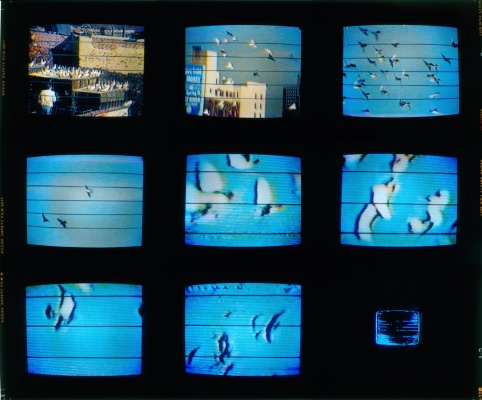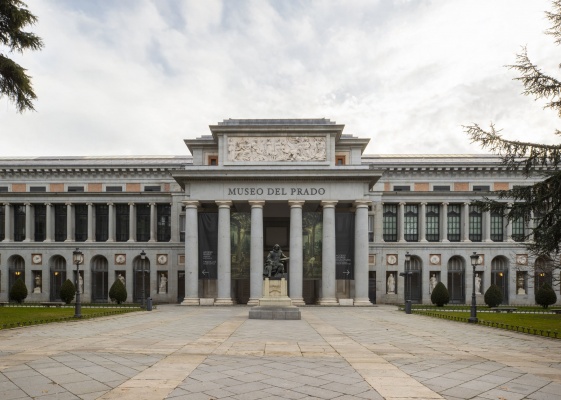Descripción de la Exposición
What is a rebel?
Text by Bea Espejo
Rebellion sweeps through the art of the last century like an attack of lumbago. It’s like a lumbar puncture that brings down any dominant discourse that attempts to take a stand. A motor of creativity, an attitude, a way of looking at the world. Starting with the first avant-gardes its intensity comes and goes according to the movement which triggers it. With the incorporation of the machine Futurism quickly made it clear that industry was the new pillar on which everything was supported, at the risk of displacing the hitherto absolute referent: nature. Cubism, with its deconstruction of the image and inspired by the necessity to recover the form that had been lost with Impressionism, was the decisive step towards an anarchy that was the consequence of eras of repression. Dada promptly arrived as pure rebellion—against logic, against social and aesthetic conventions, against common sense. Its anti-art filled the galleries with absurdity, extolling even the commonest of everyday objects, a preamble to Surrealism, which took to their final consequences expressive automatism and the compte-rendu des rêves, the dream survey, hallucinations and delusions that have never been separate from the creative pulse.
Anything went provided it liberated the mind in the years in which the Civil War in Spain delineated, out of necessity, another possible setting for art. Abstraction also stuck close to the idea of disregarding the rules, through which there circulated the rebel spirit of the 1960s which rejected classification so much. With its do-it-yourself emblems Punk also encouraged a struggle against the control of the market in the search for creative freedom without constraint or limitation. Here are the fanzines and the self-publications, the homemade recordings and the alternative spaces thought up by the artists themselves. With this kind of idea the Museum of Spanish Abstract Art was set up fifty years ago in Cuenca. Today it would be called an artist-run space, but in that far-off 1966, with Fernando Zóbel leading the way, it was called a friends’ dream, a bold step, a strange miracle. Since the late 1970s, when Punk was taken to be already dead, a rebellious attitude prevails in contemporary art, be it on the basis of explicitness or suggestion, of the gesture or the terse proclamation. At times as an ideological vehicle, and at other times as simple provocation. A pain in the joints with regard to any mainstream idea of art that emanates from many of the retrospectives, historical revisions, exhibitions and biennials of art that we see today.
Reading this exhibition in terms of rebellion entails thinking about painting as nonconformity and about creation as a renegade space. Through it there flow the artworks brought together here. Circulating through the El Paso group, active from 1957 to 1960, were many of the ideas of Rafael Canogar, Luis Feito, Antonio Saura and Manolo Millares. In the late 1950s they shared a common revulsion towards the reality of the moment, Francoism, which they channelled through an abstract visual language that was consequently impervious to censorship. It was their individualism and the repeated use of black paint, quickly interpreted by international critics as a form of protest, that distinguished Spanish Informalism from other, more aseptic, ideological formulations. The radical break with academic art and their political position vis-à-vis the regime marked each step they took in painting.
In identifying with a gestural current extrapolated from the teachings of the New York School, the members of the El Paso group were to exploit a dramatic quality with finer results than any previous abstract movement.
Art, said Manolo Millares in 1959, the year of his Cuadro72 (Painting 72), cannot whitewash evil, for that reason the blacks in his burlap pictures are “insidious archetypes, shades of human redemption, zoomorphic inventions that culminate in the horror of smoke-filled skies because our homunculus is not lacking in essential tragedy and death Spanish-style.” Although death and archaeology were his perennial obsessions, he never ceased exploring compositions of amorphous dimensions and in harmonious textures, consistently arranged as the agency of protest. His greatest revolution resides in an eloquent political critique and an ethical outcry expressed through materials and colour.
For many of the Informalist artists it was precisely the problem of colour that led to an apparent contradiction: the negation of colour in painting, whose language is based on expressivity, the value of materials and gesture. Through this there arose a rebellious attitude of political outrage. The colour of the negation of colour. The one José Guerrero conveys in his pictures borders on the violent, the strident, the accidental. A strong, vibrant black.
Tàpies’s pictorial syntax is of the conventional kind. What he was doing, he was wont to say, was spitting in the face of the sanctimonious. Starting with his passage—thanks to his cousin Modest Cuixart, who wass some two years his junior—through Dau al Set, that group of avant-garde renewal associated with a magazine, which relaunched Surrealism at the end of the 1940s, Tàpies and his cousin, undoubtedly influenced by the rebellious telluric personality of Joan Ponç, explore the domain of the abstract, primarily the combination of lines and signs, the play of colour and texture. This marks the beginning of a sincere revolutionary ambition against a fascist and bourgeois context they are forever speaking out against. Cuixart went from materic experimentation to Informalism and from magic to introspection. Over the years Tàpies also made the return journey towards himself. Their artworks were installed in a region of silence, of austere abstraction, bare and daunting. All of them were unequivocal: no conventionalisms, preconceptions, acts of submission, appearance, lying, deceit, perjuring, falsehood. No injustices, lucre, mourning, absolute or dictatorial powers, wars, established myths, fomented ignorance. No coups, exploitation of man, class monopoly. No to an art that is bound, repeated, distorted, academic, directed, stratified…
Albert Camus asked the big question in The Rebel, a book about the ethics of action published in 1951. What is a rebel? The rebel, said Camus, he who turns against something, performs a U-turn. He pits what is preferable against what is not. He is a man who says no. Although refusal does not mean renunciation.
Bea Espejo [1]
--------------
[1] Bea Espejo is a Barcelona-based journalist, art historian and art critic who regularly contributes to the Spanish newspaper El País.
Translation: Martine Heredia

Exposición. 08 may de 2025 - 14 sep de 2025 / MNAC - Museu Nacional d'Art de Catalunya / Barcelona, España

Formación. 30 oct de 2025 - 11 jun de 2026 / Museo Nacional del Prado / Madrid, España